Once again. According to Manuscript E the dream soul of Hau
Maka (sleeping soundly in Hiva) searched for a place
where the King could live, i.e. a residence.
... Everywhere the dream soul looked around
for a residence for the king. The dream soul went to Maunga
Teatea and gave him the name 'Maunga Teatea A Hau Maka O
Hiva'. The dream soul of Hau Maka looked around. From
Maunga Teatea she looked to Rangi Meamea (i.e.,
Ovahe).
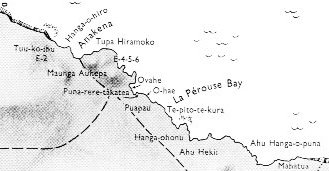
The dream soul spoke the following: 'There it
is - ho! - the place - ho! - for the king - ho! - to live (there
in the future), for this is (indeed) Rangi Meamea.' The
dream soul descended and came to Mahatua. She named the
place 'Mahatua A Hau Maka O Hiva'. The dream soul
continued to look around for a residence for the king. Having
reached Taharoa she named the place 'Taharoa A Hau
Maka O Hiva'. The dream soul moved along and reached
Hanga Hoonu. She named the place 'Hanga Hoonu A Hau Maka
O Hiva'.
The dream soul came to Rangi Meamea
and looked around searchingly. The dream soul spoke: 'Here at
last is level land where the king can live.' She named the place
'Rangi Meamea A Hau Maka O Hiva'. The mountain she named
'Peke Tau O Hiti A Hau Maka O Hiva'. The dream soul moved
along a curve from Peke Tau O Hiti to the mountain Hau
Epa, which she named 'Maunga Hau Epa A Hau Maka O Hiva'.
The dream soul went to the other side of the
mountain Hau Epa. As soon as the dream soul looked
around, she saw the sand (beach), which was very white and
light. She remained there and explored everything. After she had
looked around carefully, the dream soul of Hau Maka said,
'Ah! This is the place that will serve as a residence for the
king. She named the place 'Oromanga A Hau Maka O Hiva'
and also named the neighboring bay 'Hanga Moria One A Hau
Maka O Hiva'.
The dream soul stepped forth lightly and
reached Papa O Pea. She carefully looked around for a
place where the king could settle down after his arrival and
gather his people around (? hakaheuru). Having assembled
his people (?) and having come down, he would then go from
Oromanga to Papa O Pea, so went the speech of the
dream soul. She named the place 'Papa O Pea A Hau Maka O Hiva'.
She then hastened her steps toward Ahu Akapu. There she
looked again for a residence of the king. Again the dream soul
of Hau Maka spoke: 'May the king assemble his people (?)
and may he come in the midst of his people from Oromanga
to Papa O Pea. When the king of Papa O Pea has
assembled his people (?) and has come to this place, he reaches
Aha Akapu. To stay there, to remain (for the rest of his
life) at Ahu Akapu, the king will abdicate (?) as soon as
he has become an old man'. She named the place 'Ahu Akapu A
Hau Maka O Hiva'. The (entire) land she named 'Te Pito O
Te Kainga A Hau Maka O Hiva'. The
dream soul turned around and hurried back to Hiva, to its
(Home)land, to Maori. She slipped into the (sleeping)
body of Hau Maka, and the body of Hau Maka
awakened. He arouse and said full of amazement 'Ah' and thought
about the dream ...
Later the Explorers would reach Rangi Meamea
(Purple Sky) in "July 23.
I have here translated meamea with
'purple' because anciently that was the colour for the King - and
of the Sea according to Homer.
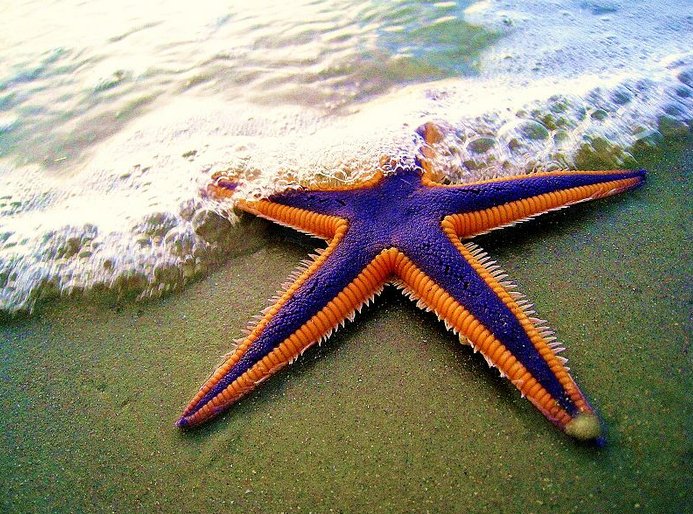
23 / 7 = 22 / 7 + 1 → π + 1 → 414 = 14 * 29½ + 1.
This suggests "July 23 could have been regarded as the date for
a conjuntion between the Sun and the Moon.
|
JUNE 28 |
29 (180) |
SIRIUS |
JULY 1
(*102) |
 |
 |
 |
 |
|
Ga4-16 |
Ga4-17 (100) |
Ga4-18 |
Ga4-19 |
|
ν Hydrae (163.1) |
no star listed (164)
ALTAIR (α
Aquilae) |
Wings-27 (Snake)
η
Octans (165.4),
ALKES
(Shallow Basin) =
α
Crateris
(165.6)
*124.0 = *165.4 - *41.4 |
ANA-TIPU-4 (Upper-side-pillar - where the guards stood)
MERAK
(Loin, not Lion) =
β
Ursae Majoris
(166.2),
DUBHE
(Bear) =
α
Ursae Majoris
(166.7) |
 |
|
Aug 31 |
Sept 1 |
2 (*165) |
3 (246) |
|
°Aug 27 |
28 |
29 (*161 → °June 10) |
30 (242) |
|
'Aug 4 (216) |
5 (*137) |
6 |
7 |
|
"July 21 |
22 / 7 → π |
Te Anakena 23 (204) |
24 (*125) |
|
... They remained in Hanga Hoonu
for five days. On the twenty-third day of the month of
July ('Anakena'), they reached Rangi Meamea ...
[E:25-26] |
The Chinese Emperor was drawing his bow at Sirius but he did not
use an
arrow ('teka'). His expectant servant in front of him -
probably a female we can see from her 'crocodile' girdle -
seems to be waiting for the resulting rain drops. It was the
place in the sky named after a dry
shallow basin (Al Kes).
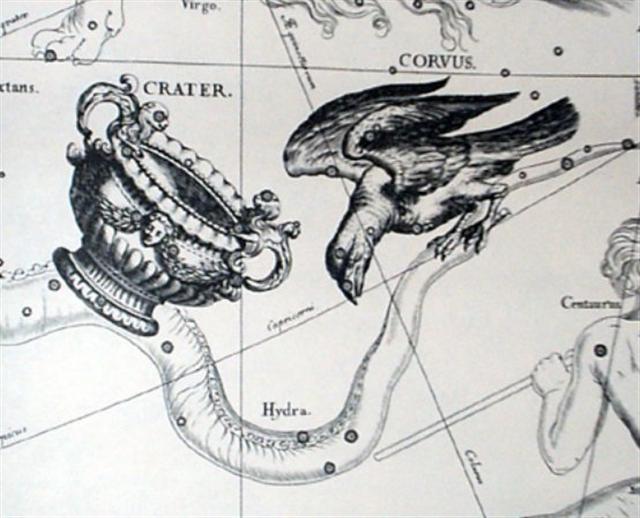
From "July 23 (204) to the night when Sirius culminated (at 21h)
there were 366 - 204 = 162 days. Or we could rather say that
when the Sun was at Al-kes it was a day zero, in which case the
distance to "January 1 would be 366 - 205 = 161 (→
the number of Fibonacci → the Golden Mean)
right ascension days.
... The month, which takes its name from
Juppiter the oak-god, begins on June 10th [161] and ends of July 7th.
Midway comes St. John's Day, June 24th, the day on which the
oak-king was sacrificially burned alive. The Celtic year was
divided into two halves with the second half beginning in July,
apparently after a seven-day wake, or funeral feast, in the
oak-king's honour ...
.jpg)
|
CLOSE TO THE SUN: |
|
DEC 7 |
8 |
9 |
10 |
11 (345) |
12
(*266) |
 |
 |
 |
 |
 |
 |
|
Gb2-6
(32) |
Gb2-7 |
Gb2-8 |
Gb2-9 |
Gb2-10
(82 + 183) |
Gb2-11 (266) |
|
BUNDA (Foundation) / KAKKAB
NAMMAΧ (Star of Mighty Destiny) |
θ Piscis
Austrini (330.1), λ Oct. (330.7) |
|
Al Sa'd al Su'ud-22 (Luckiest of the Lucky) /
Emptiness-11 (Rat)
TSIN = 36 Capricorni
(325.2),
ALPHIRK (The Flock) = β Cephei
(325.7),
SADALSUD
=
β
Aquarii,
ξ
Gruis (325.9) |
no star listed (326) |
CASTRA = ε Capricorni
(327.2),
BUNDA
= ξ Aquarii
(327.5)
SIRIUS (α Canis Majoris)
|
Mahar sha hi-na Shahū-26 (Western One in the Tail of
the Goat)
NASHIRA =
γ
Capricorni
(328.0),
ν
Oct. (328.3), AZELFAFAGE
= π¹ Cygni,
κ
Capricorni (328.7 |
Arkat sha hi-na Shahū-27 (Eastern One in the Tail of
the Goat)
ENIF
(The Nose) = ε Pegasi, ERAKIS = μ Cephei
(329.2),
46 CAPRICORNI,
JIH
(the Sun) =
κ
Pegasi
(329.3),
ι
Piscis Austrini (329.4),
λ
Capricorni (329.6),
ν
Cephei (329.7),
DENEB ALGIEDI
=
δ
Capricorni
(329.8)
*288.0 = *329.4 - *41.4 |

... In China,
with Capricornus, Pisces, and a part of Sagittarius,
it [Aquarius] constituted the early Serpent, or
Turtle, Tien Yuen; and later was known as
Hiuen Ying, the Dark Warrior and Hero, or Darkly
Flourishing One, the Hiuen Wu, or Hiuen
Heaou, of the Han dynasty, which Dupuis gave as
Hiven Mao. It was a symbol of the emperor
Tchoun Hin, in whose reign was a great deluge;
but after the Jesuits came in it became Paou Ping,
the Precious Vase. It contained three of the sieu,
and headed the list of zodiac signs as the Rat,
which in the far East was the ideograph for 'water',
and still so remains in the almanacs of Central
Asia, Cochin China, and Japan ... |
|
Febr 9 (40) |
10 |
11 |
12 (408) |
13
(*329) |
All Hearts' Day |
|
°Febr 5
(36) |
6 |
7 |
8 (*324) |
9 (40) |
10 |
|
'Jan 13
(378) |
14 |
15
(*300) |
16 |
17 |
18 (383) |
|
"Dec 30
(364) |
Ko Koró
(→ kórē) 31 |
"Jan 1 |
2 |
3 |
4 |
|
... On February 9 the Chorti Ah K'in,
'diviners', begin the agricultural year. Both the
260-day cycle and the solar year are used in setting
dates for religious and agricultural ceremonies,
especially when those rituals fall at the same time
in both calendars. The ceremony begins when the
diviners go to a sacred spring where they choose
five stones with the proper shape and color. These
stones will mark the five positions of the sacred
cosmogram created by the ritual. When the stones are
brought back to the ceremonial house, two diviners
start the ritual by placing the stones on a table in
a careful pattern that reproduces the schematic of
the universe. At the same time, helpers under the
table replace last year's diagram with the new one.
They believe that by placing the cosmic diagram
under the base of God at the center of the world
they demonstrate that God dominates the universe.
The priests place the stones in a very particular
order. First the stone that corresponds to the sun
in the eastern, sunrise position of summer solstice
is set down; then the stone corresponding to the
western, sunset position of the same solstice. This
is followed by stones representing the western,
sunset position of the winter solstice, then its
eastern, sunrise position. Together these four
stones form a square. They sit at the four corners
of the square just as we saw in the Creation story
from the Classic period and in the Popol Vuh.
Finally, the center stone is placed to form the
ancient five-point sign modern researchers called
the quincunx ...


... In the
inscriptions of Dendera, published by Dümichen, the
goddess Hathor is called 'lady of every joy'.
For once, Dümichen adds: Literally ... 'the lady of
every heart circuit'. This is not to say that the
Egyptians had discovered the circulation of the
blood. But the determinative sign for 'heart' often
figures as the plumb bob at the end of a plumb line
coming from a well-known astronomical or surveying
device, the merkhet. Evidently, 'heart' is
something very specific, as it were the 'center of
gravity' ...
See Aeg.Wb. 2, pp. 55f.
for sign of the heart (ib) as expressing
generally 'the middle, the center'.
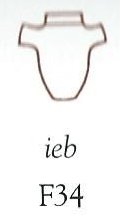
And this may lead
in quite another direction. The Arabs preserved a
name for Canopus - besides calling the star Kalb
at-tai-man ('heart of the south') ... Suhail
el-wezn, 'Canopus Ponderosus', the
heavy-weighing Canopus, a name promptly declared
meaningless by the experts, but which could well
have belonged to an archaic system in which Canopus
was the weight at the end
of the plumb line, as befitted its important
position as a heavy star at the South Pole of the
'waters below'. Here is a chain of inferences which
might or might not be valid, but it is allowable to
test it, and no inference at all would come from the
'lady of every joy'. The line seems to state that
Hathor (= Hat Hor, 'House of
Horus') 'rules' the revolution of a specific
celestial body - whether or not Canopus is alluded
to - or, if we can trust the translation 'every',
the revolution of all celestial bodies. As concerns
the identity of the ruling lady, the greater
possibility speaks for Sirius, but Venus cannot be
excluded; in Mexico, too, Venus is called 'heart of
the earth'. The reader is invited to imagine for
himself what many thousands of such pseudo-primitive
or poetic interpretations must lead to: a disfigured
interpretation of Egyptian intellectual life ... |
|
CLOSE TO THE FULL
MOON: |
|
JUNE
7 |
8
(*79) |
9 |
10 (161) |
11 |
12 |
|
The Knot (Ukdah) |
Rishu A.-13 (Head of the Lion)
ψ Leonis (146.4),
RAS ELASET AUSTRALIS
= ε Leonis
(146.6)
*105.0 = *146.4 - *41.4 |
VATHORZ PRIOR = υ Carinae
(147.9) |
|
Star-25 (Horse) /
ANA-HEU-HEU-PO-5 (Pillar where debates were held)
ALPHARD
(The Horse) =
α
Hydrae
(142.3),
ω
Leonis (142.6),
τ¹
Hydrae (142.7) |
Al Tarf-7 (The End)
ψ
Velorum (143.3),
ALTERF
=
λ
Leonis,
τ²
Hydrae (143.4),
ξ
Leonis (143.5)
*102.0 = *143.4 - *41.4 |
A Hydrae
(144.1)
VEGA (α
Lyrae)
|
UKDAH
(Knot) = ι Hydrae
(145.4), κ Hydrae (145.5),
SUBRA = ο Leonis
(145.8)
*104.0 = *145.4 - *41.4 (= *288 - *184) |
 |
|
Aug 10 |
11 |
12 |
13
(*145) |
14 |
15 (227) |
|
°Aug 6 |
7 |
8 (220) |
9 |
10 |
11 (*143) |
|
'July 14 |
15 |
16 |
17 (*118) |
18 |
19 (200) |
|
SIRIUS |
"July 1 |
2 |
3
(*104) |
4 (185) |
Te Anakena 5 |
|
At the time of rongorongo Sirius
stood like a pillar at day zero in June 30, 181
(*101), and 101 days later came Spica in October 9,
282 (*202). The flag of Brazil has uplifted Spica
with a little dot far down marking Dramasa (σ
Octantis, the South Pole star). In between we can
perceive the Southern Cross, and between Spica and
the Southern Cross is the Tail of the Hydra (γ
Hydrae, Al Dhanab al Shuja) - in the day
before Spica but below the curved band. To the right
is the Scorpion with Antares placed at the opposite
side compared to Procyon (α
Canis Minoris), below O in ORDEM. Alphard (α
Hydrae) is below M. Sirius and 4 more stars in Canis
Major are noted below Alphard, together with
Canopus. In addition to 8 stars in the Scorpion we
can also see 3 more stars to the left which mark the
Southern Triangle (Triangulum Australe).
Altogether there are 26 + 1 = 27 stars:

... They stayed (there longer). On the fifth day of
the month of July (Anakena) [day 186 + 41 =
227], they all got up, went downhill, went on, and
reached Hanga Te Pau. They took their
provisions with them, carrying them on their
shoulders, went on, and reached Te Pou. They
made camp and slept in Te Pou on the tenth of
the month of July (Anakena). Then they all
got up, carried their provision on their shoulders,
went straight ahead, and followed the path of the
dream soul of Hau Maka. They came to Hua
Reva and said, This is Hua Reva A Hau Maka!... |
 |
 |
 |
 |
 |
 |
|
Ga3-19 |
Ga3-20
(79) |
Ga3-21 |
Ga3-22 |
Ga3-23 |
Ga3-24 |
Te Pou (the Pillar) was an Easter Island name for Sirius, the
exceptional star which in ancient Egypt had caused the earth to become inundated
by the rising waters of the Nile (the Milky Way) - i.e. had made Mother Earth fertile again.
... Pliny wants to assure us that 'the
whole sea is conscious of the rise of that star, as is most
clearly seen in the Dardanelles, for sea-weed and fishes
float on the surface, and everything is turned up from the
bottom'. He also remarks that at the rising of the Dog-Star
the wine in the cellars begins to stir up and that the still
waters move
...




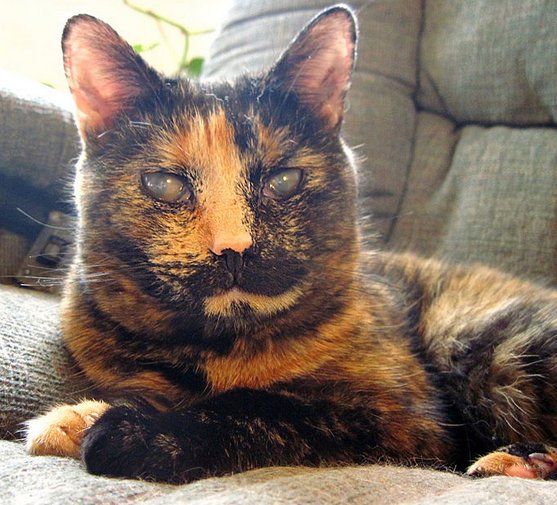
... the jaguar invited the
anteater to a juggling contest, using their eyes removed from
the sockets: the anteater's eyes fell back into place, but the
jaguar's remained hanging at the top of a tree, and so it became
blind. At the request of the anteater, the macuco bird made the
jaguar new eyes out of water, and these allowed it to see in the
dark. Since that time the jaguar only goes out at night. Having
lost fire, it eats meat raw ...
At the time of the Bull (*64 right
ascension days before the time-frame of rongorongo) the Full
Moon would have been at the right ascension line for Vega in
JUNE 9, and the following day (10 / 6 as in the headgear of
the Mad Hatter) was number 161. Presumably the implication
was that here Father Light (Jus Piter) abruptly went
up to the north pole - i.e. where it had been around half a
precessional cycle ago. At this time of the year and at the
north pole the Sun would never set.

|








.jpg)














